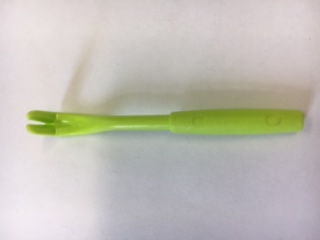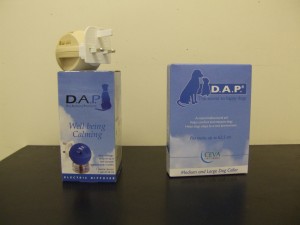Included in our spring newsletter: Keeping your pet in shape, what happens when your pet becomes overweight, rabbits teeth – a growing issue and caring for your older cat, some top tips. Read our Spring 2017 newsletter here.


Included in our spring newsletter: Keeping your pet in shape, what happens when your pet becomes overweight, rabbits teeth – a growing issue and caring for your older cat, some top tips. Read our Spring 2017 newsletter here.


At the present time, the risk of your pet picking up any disease from ticks in the London area is still low. Lyme disease can be spread to pets and people from ticks, but we have not seen any cases of pets picking up this disease whilst living in the London area to date. However we are aware that Lyme disease may be present in ticks in Richmond park, and may be present in other parks particularly where deer are present, and so we do recommend tick treatments in these areas.



Healing your pain… changing your life.
About K-Laser
What is Laser Therapy?
Laser Therapy, or “photobiomodulation”, is the use of specific wavelengths of light (red and near-infrared) to create therapeutic effects. These effects include improved healing time, pain reduction, increased circulation and decreased swelling. Laser Therapy has been widely utilized in Europe by physical therapists, nurses and doctors as far back as the 1970’s. Now, after FDA clearance in 2002, Laser Therapy is being used extensively in the United States.
Patient Benefits of Laser Therapy
Laser Therapy is proven to biostimulate tissue repair and growth. The Laser accelerates wound healing and decreases inflammation, pain, and scar tissue formation. In the management of chronic pain Class IV Laser Therapy can provide dramatic results, is non-addictive and virtually free of side effects.
Has effectiveness been demonstrated scientifically?
Yes. There are thousands of published studies demonstrating the clinical effectiveness of Laser Therapy. Among these, there are more than one hundred rigorously controlled, scientific studies that document the effectiveness of laser for many clinical conditions.
Cellular Effects of Laser Therapy
During Laser Therapy the infrared laser light interacts with tissues at the cellular level and metabolic activity increases within the cell, improving the transport of nutrients across the cell membrane. This initiates the production of cellular energy (ATP) that leads to a cascade of beneficial effects, increasing cellular function and health.
Laser Therapeutic Effects
During each painless treatment laser energy increases circulation, drawing water, oxygen, and nutrients to the damaged area. This creates an optimal healing environment that reduces inflammation, swelling, muscle spasms, stiffness, and pain. As the injured area returns to normal, function is restored and pain is relieved.
How many treatments does it take? This depends on the nature of the condition being treated. For some acute conditions 1 to 6 treatments may be sufficient. Those of a more chronic nature may require 10 to 15 (or more) treatments. Conditions such as severe arthritis may require ongoing periodic care to control pain.
How long before the results are felt? You may feel improvement in your condition (usually pain reduction) after the very first treatment. Sometimes you will not feel improvement for a number of treatments. This does not mean that nothing is happening. Each treatment is cumulative and results are often felt after 3 or 4 sessions.
Can it be used in conjunction with other forms of treatment? Yes! Laser Therapy is often used with other forms of therapy, including physical therapy, chiropractic adjustments, massage, soft tissue mobilization, electrotherapy and even following surgery. Other healing modalities are complementary and can be used with laser to increase the effectiveness of the treatment.
Laser therapy was born from scientific research over 30 years ago in Europe and perfected by K-LaserUSA with the latest technological advancements.


Young Veterinary Partnership

There are many potential household and garden toxins or poisons that may harm cats and dogs. We give you some tips on what to avoid, and what to do if your pet has been affected.
Raisins, Grapes, Onions, Chocolate, Alcohol, Leeks, Garlic.
Lillies, Rhododendron , Azalea, Marijuana, Pointsetta, Yew, Deadly nightshade, Holly, Ivy, Mistletoe.
Rat poison, Paracetamol/Ibuprofen (paracetamol is often IMMEDIATELY FATAL to cats), Chewing gum (zylitol), Anti-freeze (ethylene glycol), Permethrin (poisonous in cats and in high quantities in dogs – often found in supermarket anti-flea products), Weed killers / herbicides (Paraquat/doquat), Blue-green Algae, Batteries, Lead, Insecticides (Organophosphates), Slug bait (Metaldehyde), Psoriasis creams (Vitamin D analogues), Bleach, Strong detergents.
If the toxin was ingested up to 2-3hrs ago we may administer a small injection which will make your pet vomit. This can stop any further toxin being absorbed into the stomach and intestines, but is not suitable for all toxins. After this we may try to feed your pet some adsorbents such as activated charcoal. Adsorbents bind to any toxin left in the stomach and prevent any further digestion. If the toxin was on your pet’s skin we may instruct you to wash your pet with some warm mild shampoo.

A case of Tetanus: This is Barney Barnard a 6mth old Border Collie puppy. When Barney was 3mths old he came to us showing some very unusual signs. He was unable to eat properly, his ears were erect, lips pulled back and he walked with very stiff front legs. After some tests and research Barney was diagnosed with Tetanus and started on intensive treatment. We are all very pleased that after a long 3mths of treatment Barney appears to have made a full recovery. The pictures show Barney with signs of Tetanus and as he is recovering.
Tetanus is an uncommon disease in dogs. Tetanus is caused by a bacteria called Clostridium Tetani, which is found in soil. Dogs can get Tetanus if the bacteria gets into wounds or from chewing sticks. This bacteria produces a toxin which causes paralysis. Cats can also get this disease but they are more resistant to it. The signs for Tetanus start appearing 5 – 18 days after the infection.
The main clinical signs we look for are:
*Stiff legs and a short, shuffley walk,
*Elevated tail,
*Contraction of the muscles in the face so it looks like the dog is smiling.

Fireworks are a particular problem for many dogs, and can cause severe anxiety in some. Here are a few ideas that may help in dogs that are scared of loud noises.
 Dog appeasing pheromone
Dog appeasing pheromone